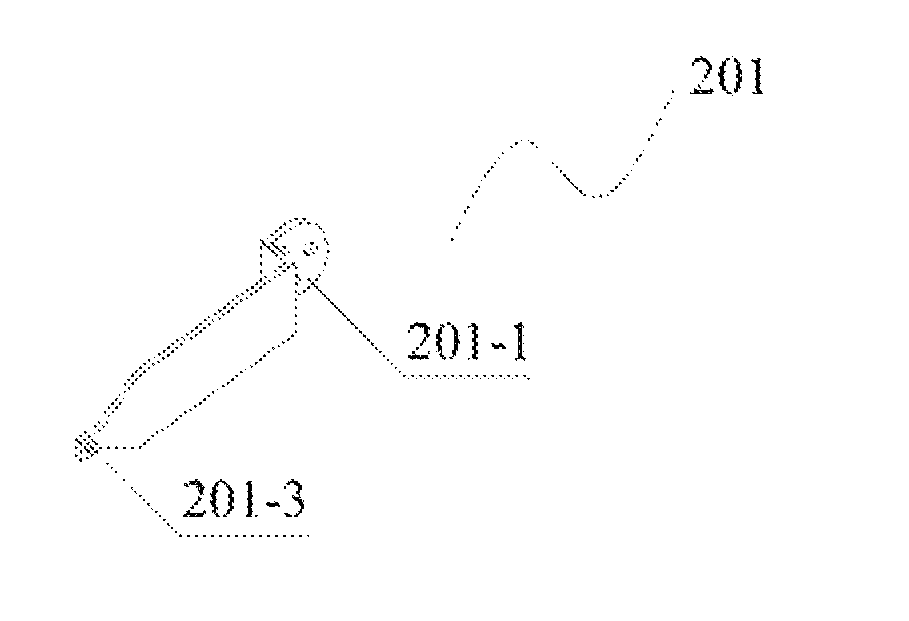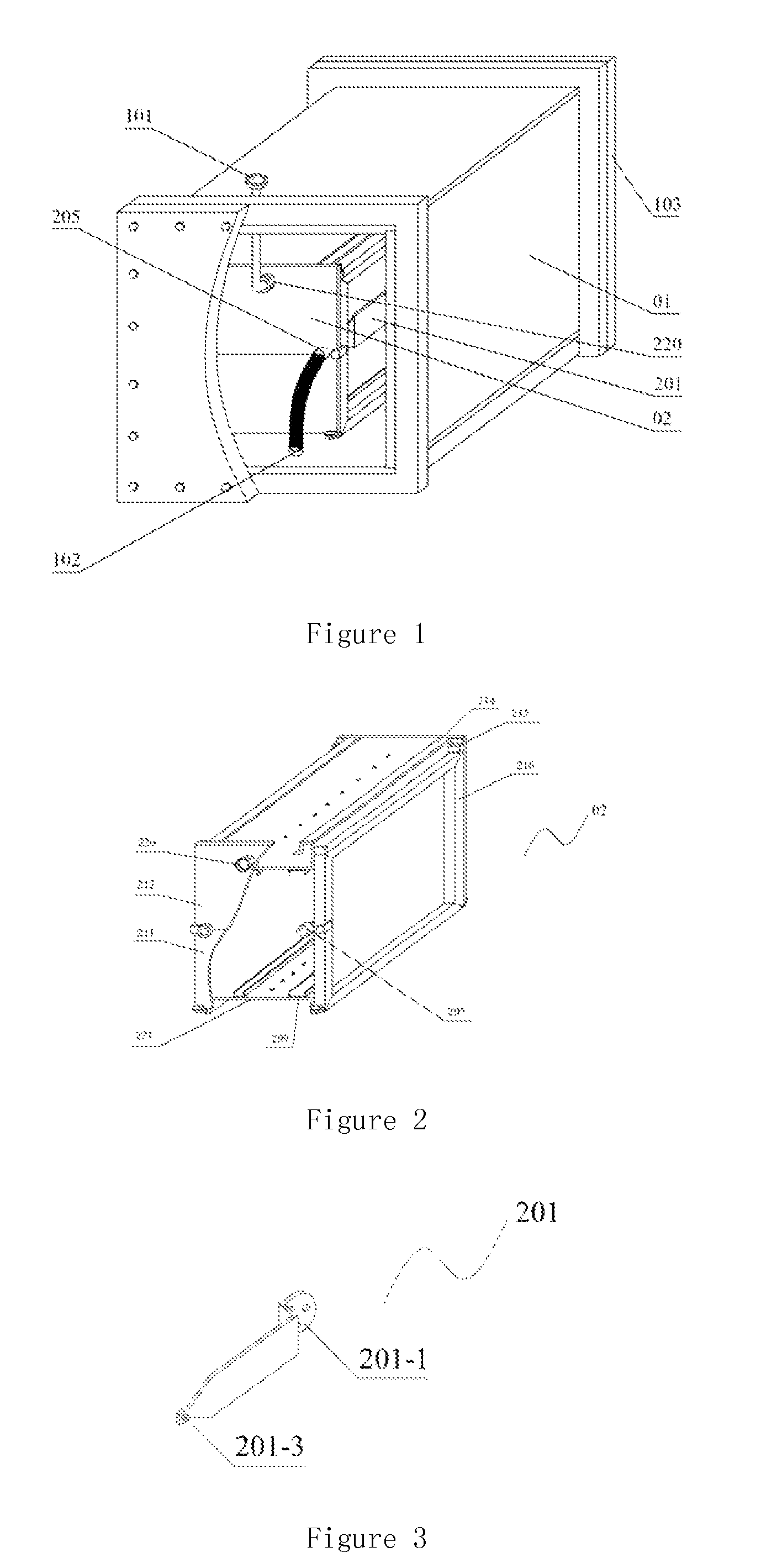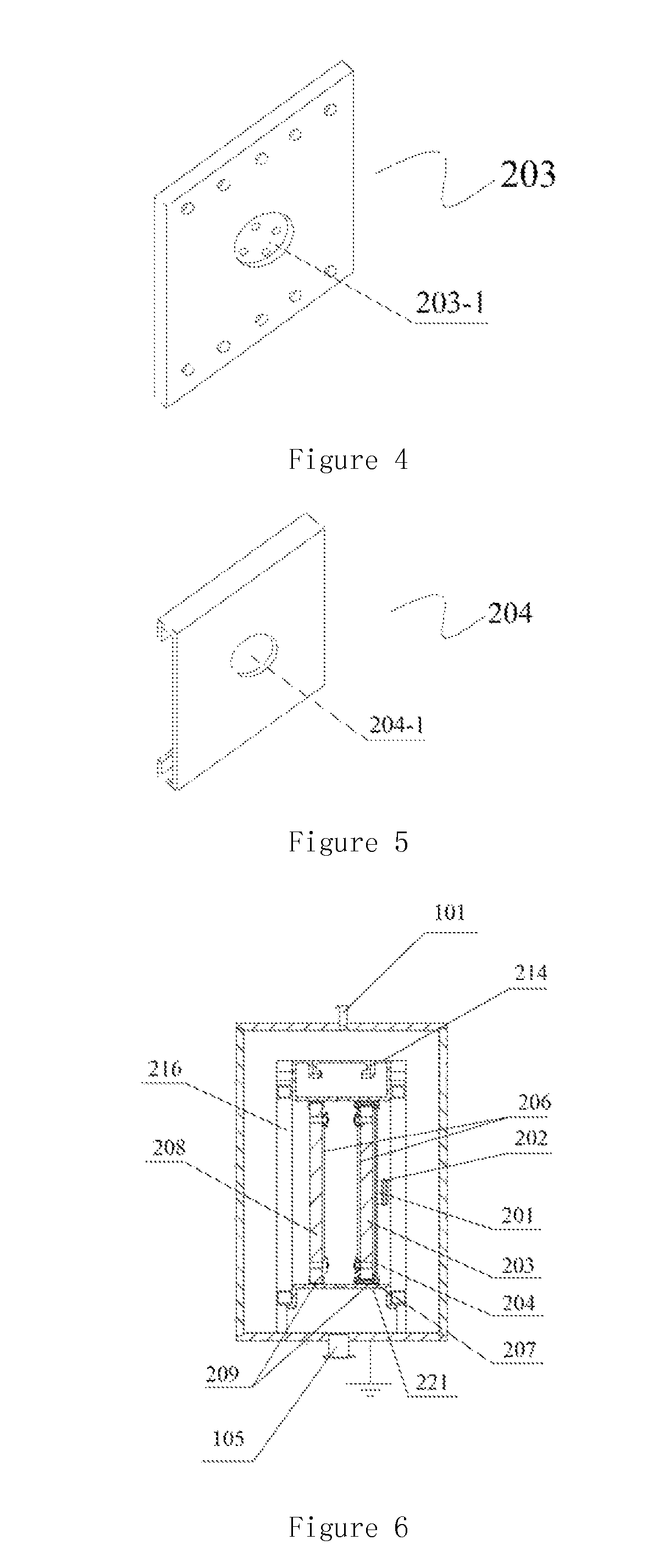Surface feed-in electrodes for deposition of thin film solar cell and signal feed-in method thereof
a solar cell and surface feed-in electrode technology, applied in the field of solar cell technology, can solve the problems of low plasma concentration, long deposition period, low deposition rate,
- Summary
- Abstract
- Description
- Claims
- Application Information
AI Technical Summary
Benefits of technology
Problems solved by technology
Method used
Image
Examples
first embodiment
The First Embodiment
[0035]The electrode plates are arranged vertically, and the feed-in port of cathode is of a circular shape and is located in a hollowed circular area at the center of the backside of the cathode electrode plate. The signal feed-in component includes a flat waist and one end with a semicircular-shaped signal feed-in surface. A through-hole is configured on the cathode shielding cover.
[0036]The principles of this embodiment are illustrated together with accompanying FIGS. 1-6. The vapor deposition system mainly includes a vapor deposition chamber, a gas system, an electrical power system, a vacuum system, a heating system, a control system, and so on. The gas system mainly provides different gases and gas lines for vapor deposition. The electrical power system mainly provides high-frequency or very-high-frequency electrical power source to discharge plasma for film deposition. The vacuum system mainly provides vacuum pumping machines and vacuum pipelines. The heati...
second embodiment
The Second Embodiment
[0043]The feed-in port of the cathode plate is of a circular shape and is located on a circular surface of a hollowed circular area at the center of the backside of the cathode electrode plate. The signal feed-in component includes a flat waist and one end with a semicircular-shaped signal feed-in surface. A through-hole is configured on the cathode shielding cover.
[0044]As shown in FIG. 6, a vertically-arranged reaction chamber is used. An anode plate 208 and a cathode plate 203 form a set of electrodes, and a total of 2 substrates 206 can be deposited with thin film simultaneously. More specifically:
[0045]a) Placing 2 glass substrates 206 (1640 mm×707 mm×3 mm) each coated with a transparent conductive film of approximately 600 nm thickness in the corresponding 2 substrate locations on the reaction chamber 02, with the film side facing outside and the glass side facing the electrode plates.
[0046]b) When reaching a vacuum state of approximately 5.0×10−4 Pa insid...
third embodiment
The Third Embodiment
[0051]The feed-in port of the cathode plate is of a circular shape and is located on a circular surface of a hollowed circular area at the center of the backside of the cathode electrode plate. The signal feed-in component includes a flat waist and one end with a semicircular-shaped signal feed-in surface. A through-hole is configured on the cathode shielding cover.
[0052]As shown FIG. 7, a horizontal reaction chamber is used. Eight (8) anode plates 208 and eight (8) cathode plates 203 form 8 sets of electrodes, and a total 16 substrates 206 can be deposited with thin film simultaneously. The detailed procedure is described as follows:
[0053]a) Placing 16 glass substrates 206 (1640 mm×707 mm×3 mm) each coated with a transparent conductive film of approximately 600 nm thickness in the corresponding 16 substrate locations on the reaction chamber 02, with the film side facing outside and the glass side facing the electrode.
[0054]b) When reaching a vacuum state of appr...
PUM
| Property | Measurement | Unit |
|---|---|---|
| frequency | aaaaa | aaaaa |
| frequency | aaaaa | aaaaa |
| excitation frequency | aaaaa | aaaaa |
Abstract
Description
Claims
Application Information
 Login to View More
Login to View More - R&D
- Intellectual Property
- Life Sciences
- Materials
- Tech Scout
- Unparalleled Data Quality
- Higher Quality Content
- 60% Fewer Hallucinations
Browse by: Latest US Patents, China's latest patents, Technical Efficacy Thesaurus, Application Domain, Technology Topic, Popular Technical Reports.
© 2025 PatSnap. All rights reserved.Legal|Privacy policy|Modern Slavery Act Transparency Statement|Sitemap|About US| Contact US: help@patsnap.com



